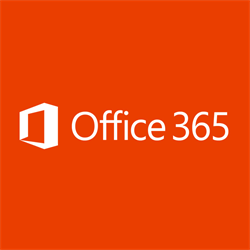You can use the connector for fast and secure file migration to Office 365, SharePoint Online, OneDrive for Business, Teams, and more from local disks or NAS, network shares, or on-premises SharePoint. Google Drive, DropBox, Box, and others are also supported via their local file stores.


How to Get the Most out of your Office 365
The Layer2 Cloud Connector can help you to get the most out of your Microsoft Office 365 investment. Find awesome tips below to significantly increase the benefits of your new cloud by seamlessly integrating it with your enterprise.
Backup Office 365 to your local network or your own Azure
In many cases, you will need a backup of your documents in the Microsoft Cloud. This is not only for disaster recovery, it is more about compliance and archives. The connector offers flexible options to manage document backups to local file shares, SharePoint on-premises, or Azure File Storage, for example using custom PowerShell scripting, or the Cloud Connector API.
Keep your documents in sync across all file stores
There are good reasons to keep your local file shares, for a transition period, or for a general hybrid approach. No problem: You can keep it in sync automatically with all Microsoft Cloud offerings, such as SharePoint Online, OneDrive for Business, Office Groups, Microsoft Teams, or Azure File Shares.
Provide up-to-date backend data in Office 365 for collaboration
Office 365 is not about file sharing, it is about collaboration. Collaboration needs connected and valid data sets in the cloud, such as contacts, product data, calendar items, and more. The connector can help you to provide up-to-date data from 100+ sources in SharePoint lists, Dynamics entities, Team channels, Azure SQL, and more.
Improve reporting in Office 365 with management dashboards
Make use of Office 365 features for reporting, dashboards, workflows, and business intelligence with your local IT systems connected. Once your local data is in sync with the cloud via Layer2, you will have all options without any restrictions. Why not visualize your connected data sets using PlumSail, BlackCompass, or Microsoft PowerBI.
Publish local data to Office 365 for mobile access from anywhere
Traditional enterprise IT systems, such as SQL, ERP, or CRM are very difficult to reach from the internet via mobile devices. No problem: You can publish this data to the Microsoft Cloud and keep it current via Layer2. Your employees or business partners can access it at any time, at any place, and on any device. In many cases, write-back of data changes is supported.
Add cloud-based workflows to local business processes
It's easy to add cloud-based workflows to your existing on-premises business processes via Layer2. You can start SharePoint Workflows, such as based on SharePoint Designer, Visual Studio, or NINTEX, on external data change. You can also start workflows in Microsoft Flow or Azure Logic Apps for any local data change across multiple systems.
Make use of the cloud for scalable data acquisition code-free
You don't have to write an app to acquire data in the cloud for your on-prem systems. You can simply make use of connected SharePoint lists and forms for this without any programming. But PowerApps is also an option.
Build your custom app based on connected data sources
While it is difficult to create an app and connect it to on-premises data stores across firewalls, it's easy with the Layer2 connector. Keep your local systems connected with SharePoint Online lists, Azure SQL, Azure Table Storage, or Amazon Web Services code-free using the Cloud Connector. Access the connected data with your own custom app, build with PowerApps, Xamarin, or others.

Ready for the next steps?
Register now for free download.
Keep your systems in sync. Download and try the Layer2 Cloud Connector today.